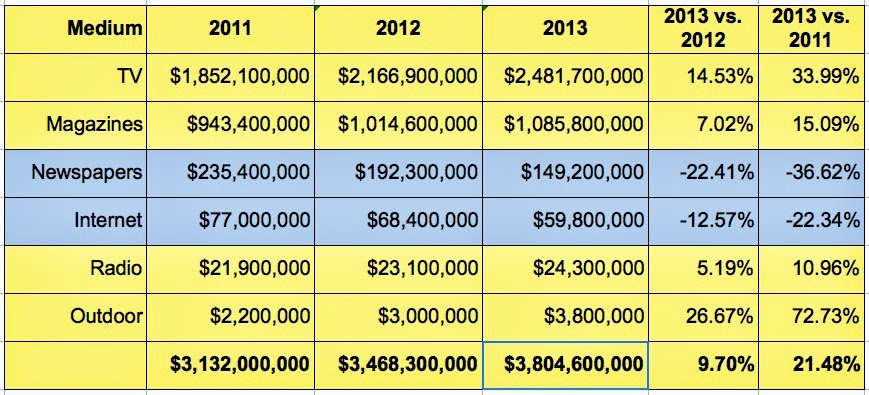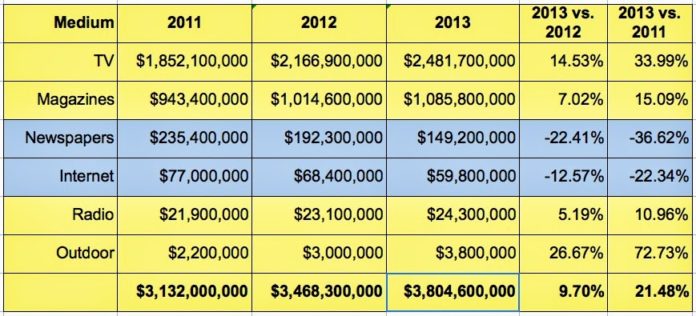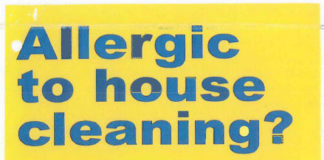According to Nielsen, the pharmaceutical industry’s spending on Direct-to-Consumer (DTC) advertising via “measured media” increased by nearly 10% in 2013 vs. 2012 as shown in the following chart (thanks to Rich Meyer of World of DTC Blog for these data; see here).
 |
| Click on image for larger view. |
So why does Rich Meyer lament that pharma DTC marketing is “stuck in the past?”
Essentially, Meyer agrees with A.J. Triano, VP, connected health at inVentiv Health’s Palio+Ignite, who said “The biggest statement on DTC is that we’re still misaligned with where people are needing our information… We’re drastically overspending on print and TV, and underutilizing the mediums where people are looking and paying attention.”
Specifically, they are talking about underutilization of the Internet for DTC display ad advertising, spending on which has slid 22% in the last two years as shown in the following chart.
 |
| Source: Nielsen measured media audit. |
The ONLY other medium which experienced a drop in DTC spending in the last two years is Newspapers. Yikes! Here’s the data:
 |
| Source: Nielsen measured media audit |
Either pharma marketers are stupid, stuck in the past, or the Internet is not all it’s cracked up to be as the the place where “empowered consumers” flock to make healthcare decisions.
Well, maybe consumers DO flock to the Internet to make healthcare decisions, but are oblivious to the display ads that stand in their way on the Internet. Keep in mind that the above data refer to such ads and DO NOT include search or social media DTC advertising.
While it is not conceivable that social media are soaking up all the ad dollars lost by display ads, I suspect the drug industry is spending that money and more on Internet search and building their own Internet health sites.
So, that’s why I put a question mark at the end of the title of this post. Although the industry spent $8.6 million less on Internet display ads last year compared to 2012, that sum and more could have been channeled to search and other “non-measured”media such as Web sites, social media, and online paid spokespersons like Paula Deen.
CORRECTION (4/3/2104): The first iteration of this post had reported $1,058,800,000 for the Magazine ad spend in 2013. The correct number is $1,085,800,000 as shown above.
NOTE: Let’s be clear about what Nielsen measures and does NOT measure. Here’s how Rich Meyer summarizes the limits of Nielsen data (here):
- Nielsen is reporting “paid media” only such as banner ads. WebMD offers more than that with integrated content, sponsorships and min-sites within it’s property. This is not part of the Nielsen number.
- Many pharma organizations are now using one media buying company for all their media. This in turn could lead to bundled deals that comprise on and off-line media. This means that media dollars are under reported in some cases.
- The Nielsen numbers do not reflect spending on developing online websites. This is usually a separate budget from media and although some brand managers have flexibility they can’t easily move dollars around from building a website to media without a lot of approvals.
- The Nielsen numbers do not reflect DTP (direct-to-physician) online media spending including online CME’s or details on websites like Medscape.
With those limitations in mind, the Nielsen data make perfect sense if you use the data to keep track of trends over the years, which is exactly what I am doing here in this post.









![6 Digital Tools at the Center of Healthcare Digitalization [INFOGRAPHIC]](http://ec2-54-175-84-28.compute-1.amazonaws.com/pharma-mkting.com/wp-content/uploads/2021/04/6DigitalTools_600px-100x70.jpg)




